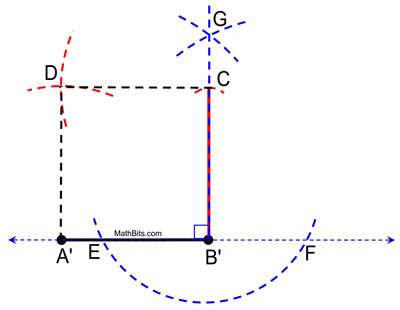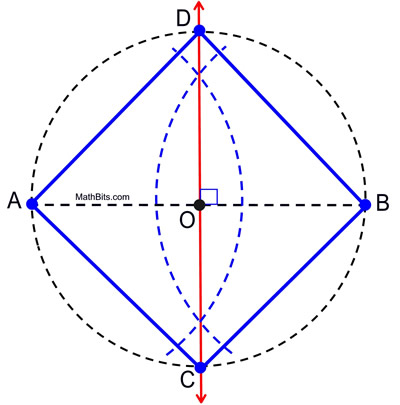We will be looking at TWO different constructions of a square. The first will be to construct a square given the length of one side, and the other will be to construct a square inscribed in a circle.
2. Copy the side of the square onto the reference line, starting at a point labeled A'. 3. Construct a perpendicular at point B' to the line through 4. Place your compass point at B', and copy the side of the square onto the perpendicular 5. With your compass still set at a span representing AB, place the compass point at C and swing an arc to the left. 6. Holding this same span, place the compass point at A' and swing an arc intersecting with the previous arc. Label the point of intersection as D. 7. Connect points A' to D, D to C, and C to B' to form a square.
Proof of Construction: As a result of the construction of the perpendicular at B', m∠A'B'C = 90º, since perpendicular lines meet to form right angles, and a right angle contains 90º. By copying the segment length of the side of the square,
2. Using your straightedge, draw a diameter of the circle, labeling the endpoints A and B. 3. Construct the perpendicular bisector of the diameter, 4. Label the points where the bisector intersects the circle as C and D. 5. Connect points A to D to B to C to A to form the square.
Proof of Construction:
Topical Outline | Geometry Outline | MathBitsNotebook.com | MathBits' Teacher Resources
|


